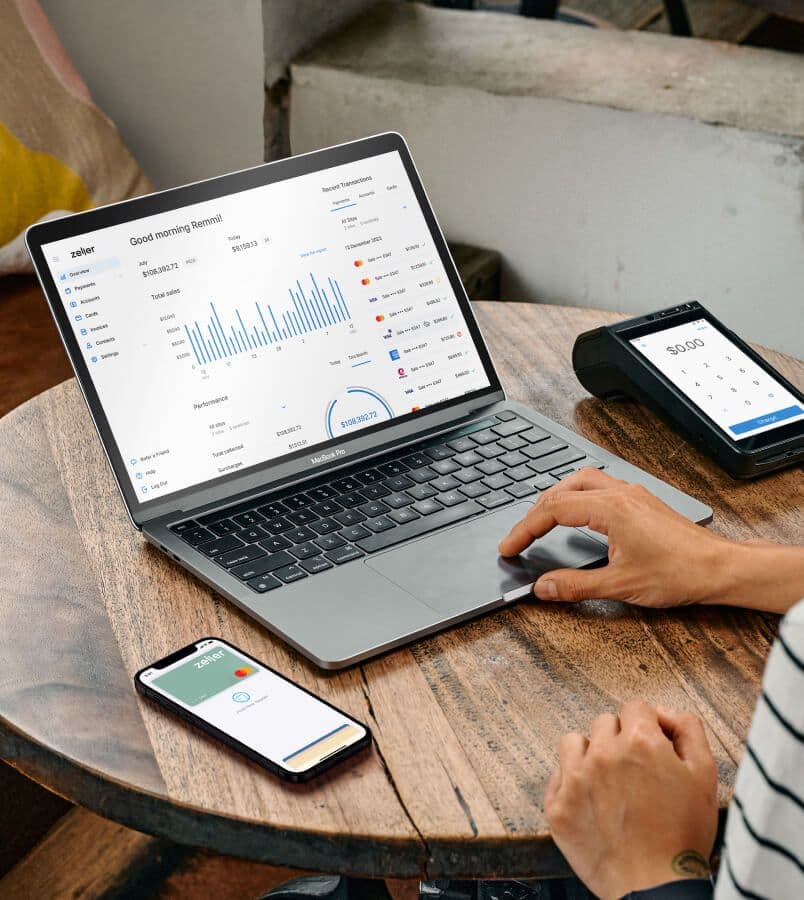
- Business Growth & Optimisation
5 Steps to Choosing the Right Pricing Strategy for Your Business
How to find the right price to maximise your profits and keep customers happy.
The importance of appropriately pricing your products cannot be understated. Too high and you could lose out to more affordable competitors, too low and you could struggle to break even. Finding the right pricing strategy is key to boosting your business’s growth trajectory.
Whether you’re starting a brand new business or reevaluating your pricing, this article outlines the five essential steps you should be taking to correctly price, or reprice your product or service. From calculating your costs, to understanding your customers, doing market research, monitoring sales and implementing price changes: this article guides you through the art and science of pricing.
1. Calculate your costs
The very first thing you need to do when deciding on a price is to calculate how much it costs you to make or deliver your product or service. You need to identify all the direct costs – that is, raw materials or components, labour costs, packaging, shipping and any manufacturing costs. You then need to consider your indirect costs, these include rent and utilities, staff salaries, marketing or advertising, general supplies and insurance and taxes such as GST.
Once you have a good idea of what each product or service costs your business, you can use one of the most simple pricing strategies: cost-plus pricing. This strategy involves simply adding a markup to the cost of your product or service.
For many retailers that are on-selling pre-made products, this is a common pricing method that works well. However, it does rely on your cost calculations being accurate. So, to ensure you’re not undercutting yourself, it’s important to also factor in market demand and competition.
2. Research your competitors
If you’re entering or operating in a crowded market, it’s critical that you understand what the going rate is for your product or service. Do your own market research by looking online, signing up for newsletters, monitoring social media or by discreetly going into your competitors’ stores or speaking to their customer service.
If you discover that your proposed pricing is far higher or lower than competing businesses, identify why. Is your product or service lacking something that your competitors are supplying? Are you offering a customer experience or convenience that your competitors are not?
If your proposed pricing is in the ballpark of the existing market, then you have a few strategic options. You might choose to adopt penetration pricing, by setting a relatively low price in order to quickly attract customers to try the product, with the view of increasing prices once your business has gained some traction. Or, if your product is new or highly innovative, you may want to initially set your prices higher than your competitors in a strategy that is known as skimming pricing. This capitalises on the willingness of early adopters to pay a premium. Then you can gradually lower your prices to target broader market segments. Or, you could simply opt for competitive pricing, whereby you set your prices close to or just under what your competitors are charging.
Whatever you do, it’s important to remember that your competitors’ costs and customers aren’t identical to your own. So, the aforementioned strategies will always work best for your business if you implement them in alignment with your production costs and your customers’ spending capacity.

3. Cater to your customers
Getting to know your customers is one of the most important business lessons you’ll ever learn. What they value and what you offer them can make or break your business; so it pays to listen. Talk to your clients and find out what they’re looking for, then bring them more of it. If you don’t have face-to-face interaction with your customers, having a customer contact management solution will help offer insights into their purchasing behaviour.
If you’re operating within a demographic that values quality, they’ll likely be prepared to pay a premium for well-made goods or white-glove service. If this is the case, your business could benefit from implementing a value-based pricing strategy, which focuses on the perceived value of the product or service. Consider the benefits, quality, and uniqueness of your offering, and price your product or service accordingly. Or, if you are aiming to create an image of prestige, you could opt for a premium pricing strategy, whereby you purposefully set a high price to position your product or service as luxurious, exclusive, and superior quality.
If your customers are searching for a bargain, either you’ll need to find ways to reduce your production costs to ensure your prices stay low, or you could adopt the loss leader pricing strategy. This involves deliberately selling certain products at a loss, in the hope that customers will purchase other, more profitable items as well, making up for the initial loss.
For businesses catering to a mix of customers at both ends of this spectrum, having a tiered pricing strategy will help you accommodate the diverse needs of your clientele. By offering a range of prices, you cast a wider net for reaching potential customers.
4. Track your sales
Once you’ve decided on a pricing strategy, it’s time to evaluate whether it’s working or not. Having a simple, integrated process that easily shows you what’s coming in, and what’s going out is key in this process.
Whether you’re accepting payments via an EFTPOS terminal or through invoicing, Zeller’s all-in-one solution is a great way to evaluate your cash flow. Business expenses can be paid for using the Zeller Debit Card or through a direct debit from the Zeller Transaction Account, and sales can be tracked via an online dashboard and mobile app, giving you an insightful visualisation of your business cash position.
Seeing the net balance of your funds over time will quickly tell you if your pricing strategy is working or not, and moreover, it will enable you to identify spending patterns, which can inform whether or not you implement a dynamic pricing strategy. Adjusting your pricing to align with sales peaks or troughs – whether over days, weeks, or seasons – can help bring in customers when business is slow, or capitalise on demand at busier times.
Similarly, if your business operates in different locations, being able to compare your sales in different venues can help you implement a geographical pricing strategy if necessary, where you adjust your prices to local market conditions.

5. Adjust your prices (if you need to)
After monitoring your sales for a period of time, you might decide you need to change your tack. If this means decreasing your prices, most customers will welcome the change. Just make sure you can reassure them that the quality of your product isn’t also decreasing.
If, on the other hand, you need to bump up your prices, there are a number of ways to go about it to ensure you don’t get your customers offside. Soften the blow by offering discounted bundles when several products or services are purchased together as a package. Improving the quality of your product, or adding in extra features, benefits, or improvements can also help to justify the increase in price.
Alternatively, consider incremental increases over time to allow customers to adjust to the changes gradually. Or implement psychological pricing by rounding them down from the nearest whole, $9.99 for example.
Timing is also an important factor. Generally, the beginning of the financial year (after the sales) is a good time to adjust your prices. Otherwise, identify when your busiest season is, and implement the changes then.
If you’re worried about backlash, notify your clients of the price increase either in-store or via email, and clearly explain the reasons. Educating your customers and being transparent with them will help build their trust and loyalty.
Finding the right price starts with the right tools.
Understanding your costs, customers, positioning, competitors, and ideal profit will help you pinpoint the pricing strategy that’s right for your products. However, it’s important to note that it’s unlikely you’ll ever choose one strategy and stick with it. Your approach will adapt and change over time and in line with the market, which is why it’s important to remain agile. Equipping yourself with the right tools to help you regularly evaluate your pricing will ensure you’re always ahead of the curve. Zeller’s end-to-end solution is your number one ally when it comes to tracking your business cash flow and using sales data to strategically grow your business.

It’s free to sign up for Zeller.
From EFTPOS to invoicing, accounts and cards, it's everything you expect from a business bank, but better.



